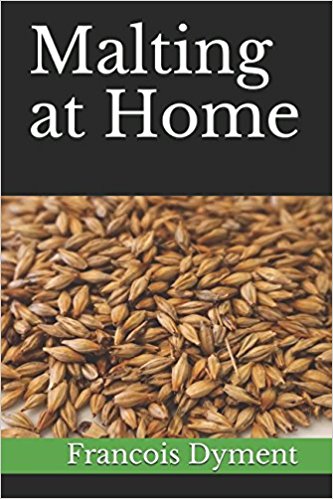Here’s what I’ve done with some of that feed barley I malted a little while ago. I know an I.P.A. is not the best beer to judge malt quality, the hops mask a lot of the malt character but I felt like drinking an I.P.A. so I made one, so don’t judge!
It’s super tasty, I’m loving these Galaxy hops. I also dry-hopped with Mosaic. There’s a dose of peach up front followed by some citrus and ending with a strong piney bitterness that reminds you that you’re drinking beer, not sangria.
I used quite a bit of caramel malt and some honey as well so it may be too malty for the style but I think it’s balanced and for me the sweetness seems to accentuate the fruity character of the hops.The Mosaic hops were sent to me from John from his families hop farm in Washington “thanks John!”
It has a nicely rounded mouth feel and as you can see in the picture a creamy head that likes to linger. O.G. was 1.059 F.G. 1.013 According to Beer Tools my efficiency was 80% What was also surprising is that I had full conversion in one hour. Being more patient than I used to be with the germination and waiting until it’s really well modified has obviously helped in developing the enzymes in the malt.
If there is a possible flaw it has to do with a faint hint of phenolic flavour that I detected in the last beer I had which would be pretty disappointing. I can barely taste it so I don’t really care but I’ve sent this one off to be judged at the local competition, so we’ll see what the judges say about it in a few weeks. The possible source may be my water. I tried using tap water treated with half a campden tablet overnight. This is the first time I’ve tried this. Has anybody else experienced an issue with this method?
Update: This beer scored pretty low at the competition. It received a 29/50 from one judge and a 31/50 from another. However, it’s main flaw was stylistic -not enough hops and too sweet. I’m usually good at taking criticism, but I do disagree that it was low in hop flavour. Maybe the Galaxy hops threw them off? I would say they’re more peachy than citrusy but this was not noticed. According to Beer Tools this beer should have had 78 IBU’s which does not include the 2 oz of Mosaic that I dry-hopped for 5 days. Oh well. Here’s what the judge who gave me the 29 had to say:
Aroma: Moderate grainy toasty malt. Not a lot of hops. Some citrus but very faint. No DMS, maybe diacetyl, low fruity esters. 7/12
Appearance: Hazy orange amber. Off-white moderate creamy head. Retention is pretty good. Leaves some lacing. 3/3
Flavour: Moderate caramel toasted bread crust. Hops are very faint. Bitterness is moderately low. Finishes sweet and the sweetness lingers in the aftertaste. some diacetyl maybe and low fruity esters. Moderately low alcohol. 11/20
Mouthfeel: Medium strong body with medium carbonation. Alcohol warmth is low and smooth. No astringency. A little cloying from sweetness. 3/5
Overall Impression: More like an English P.A. It feels a little under attenuated with way too high sweetness for the style. I also got some caramel which I sometimes mix with diacetyl. I didn’t feel any slickness in the mouth so I assume it was caramel which is fine but it was a little high. If you used some specialty malts it might be better to reduce them . Also the hop flavour and … was lacking a little. ( I could not make out a word, the guys writing was terrible) 5/10
At least there were no obvious off flavours. Looking at the recipe it probably was too sweet and malty. I used 11 lbs of pale. 1 lb. of caramel and 12 oz. of my brumalt. I mashed in at 143F for 15 min and decocted a gallon of mash to get to 152F for 1 hour. The final gravity was 1.013 making the ABV 6.09%








